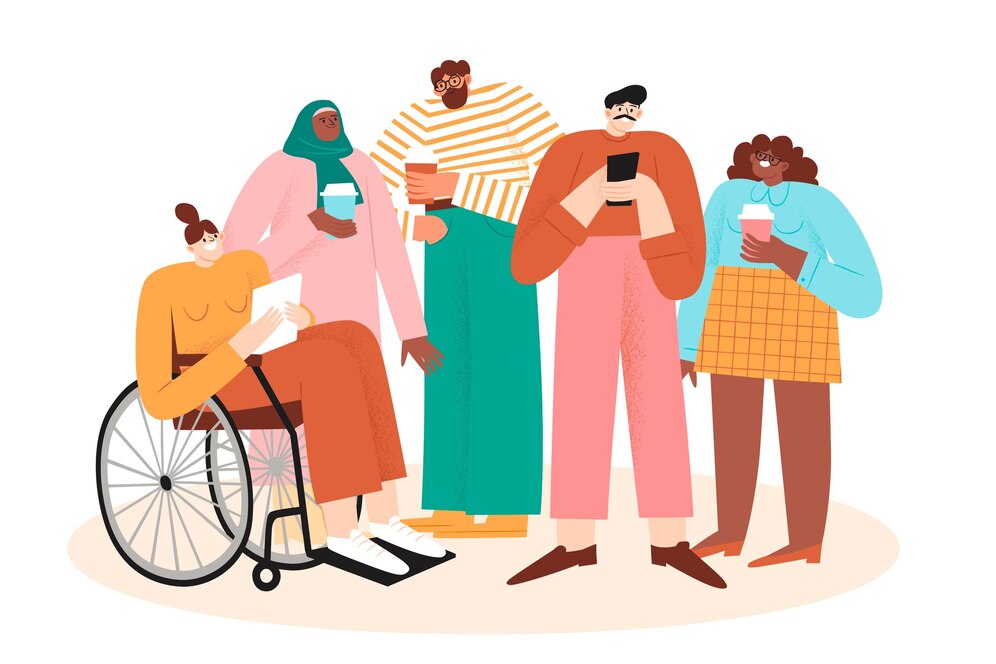Diversity and Inclusion
What is Diversity and Inclusion?

Definition:
“Diversity and Inclusion in Computing and Technology Jobs” refers to the intentional efforts and strategies employed by organizations to create a workplace environment that embraces individuals of various backgrounds, including but not limited to gender, ethnicity, race, age, sexual orientation, and abilities. It involves fostering an inclusive culture that values and respects the unique perspectives and contributions of individuals, aiming to create a diverse workforce that reflects the broader society.
Analogy:
Imagine diversity and inclusion in computing and technology jobs as a collaborative coding project. Just as diverse coding teams bring different skills, experiences, and perspectives to the table, fostering diversity and inclusion in the workplace enriches the innovation process and leads to the development of more robust and inclusive technological solutions.
Further Description:
Diversity and inclusion in computing and technology jobs involve several key components:
Recruitment and Hiring Practices: Organizations implement inclusive hiring practices to attract a diverse pool of candidates. This may include actively seeking candidates from underrepresented groups and employing unbiased recruitment processes.
Training and Education: Providing diversity and inclusion training helps raise awareness and cultivate an understanding of the importance of diverse perspectives. This can include workshops on unconscious bias, cultural competence, and creating an inclusive work environment.
Promoting Equal Opportunities: Ensuring equal opportunities for career advancement and professional development is crucial. Organizations strive to create pathways for all employees to reach their full potential, regardless of their background.
Supportive Workplace Culture: Fostering a workplace culture that values and respects differences is fundamental to diversity and inclusion. This includes promoting open communication, actively addressing discrimination or bias, and creating employee resource groups.
Mentorship and Sponsorship Programs: Establishing mentorship and sponsorship initiatives helps individuals from underrepresented groups navigate their careers and gain access to opportunities for growth and advancement.
Diverse Leadership: Promoting diversity at leadership levels is vital for setting the tone for the entire organization. Diverse leadership teams can inspire a culture of inclusivity and make strategic decisions that consider a broad range of perspectives.
Why is Diversity and Inclusion Important?
Innovation and Creativity: Diverse teams bring a variety of perspectives and problem-solving approaches, fostering innovation and creativity in the development of technology solutions.
Broader Talent Pool: Embracing diversity expands the talent pool, allowing organizations to access a wider range of skills and experiences, ultimately enhancing the quality of work produced.
Global Perspectives: Technology solutions impact a global audience, and diverse teams are better equipped to understand and address the needs of a diverse user base.
Employee Engagement and Retention: Inclusive workplaces contribute to higher levels of employee engagement and retention. Employees feel valued and supported, leading to increased job satisfaction.
Corporate Reputation: Organizations committed to diversity and inclusion build a positive reputation, attracting top talent and fostering positive relationships with clients, partners, and the broader community.
Examples and Usage:
Google’s Diversity, Equity, and Inclusion Initiatives: Google is committed to fostering diversity and inclusion in its workforce. The company implements various initiatives, including partnerships with organizations focused on underrepresented groups, unconscious bias training, and transparency in reporting diversity metrics.
AnitaB.org and the Grace Hopper Celebration: AnitaB.org is a nonprofit organization that works to advance women in technology. The Grace Hopper Celebration, organized by AnitaB.org, is the world’s largest gathering of women technologists, providing a platform for networking and professional development.
Microsoft’s Autism Hiring Program: Microsoft has a dedicated hiring program for individuals on the autism spectrum. The program aims to tap into the unique skills and perspectives of individuals with autism, contributing to a more diverse workforce.
Key Takeaways:
- Actively seek candidates from diverse backgrounds during recruitment processes.
- Provide diversity and inclusion training to raise awareness and foster understanding.
- Ensure equal opportunities for career advancement and professional development for all employees.
- Foster a culture that values and respects differences, addressing discrimination or bias promptly.
- Establish mentorship and sponsorship programs to support individuals from underrepresented groups.
- Promote diversity at leadership levels to set an inclusive tone for the entire organization.




